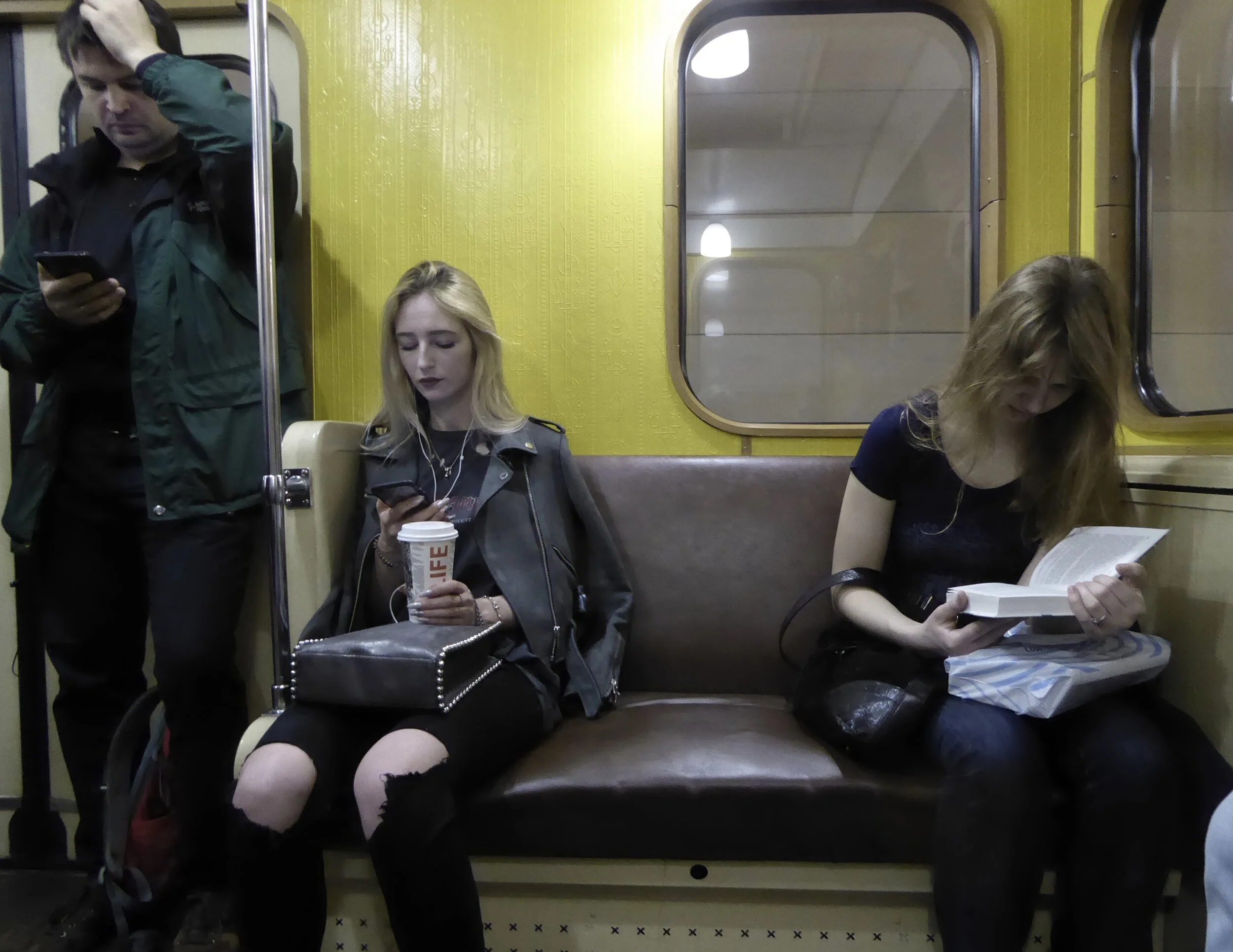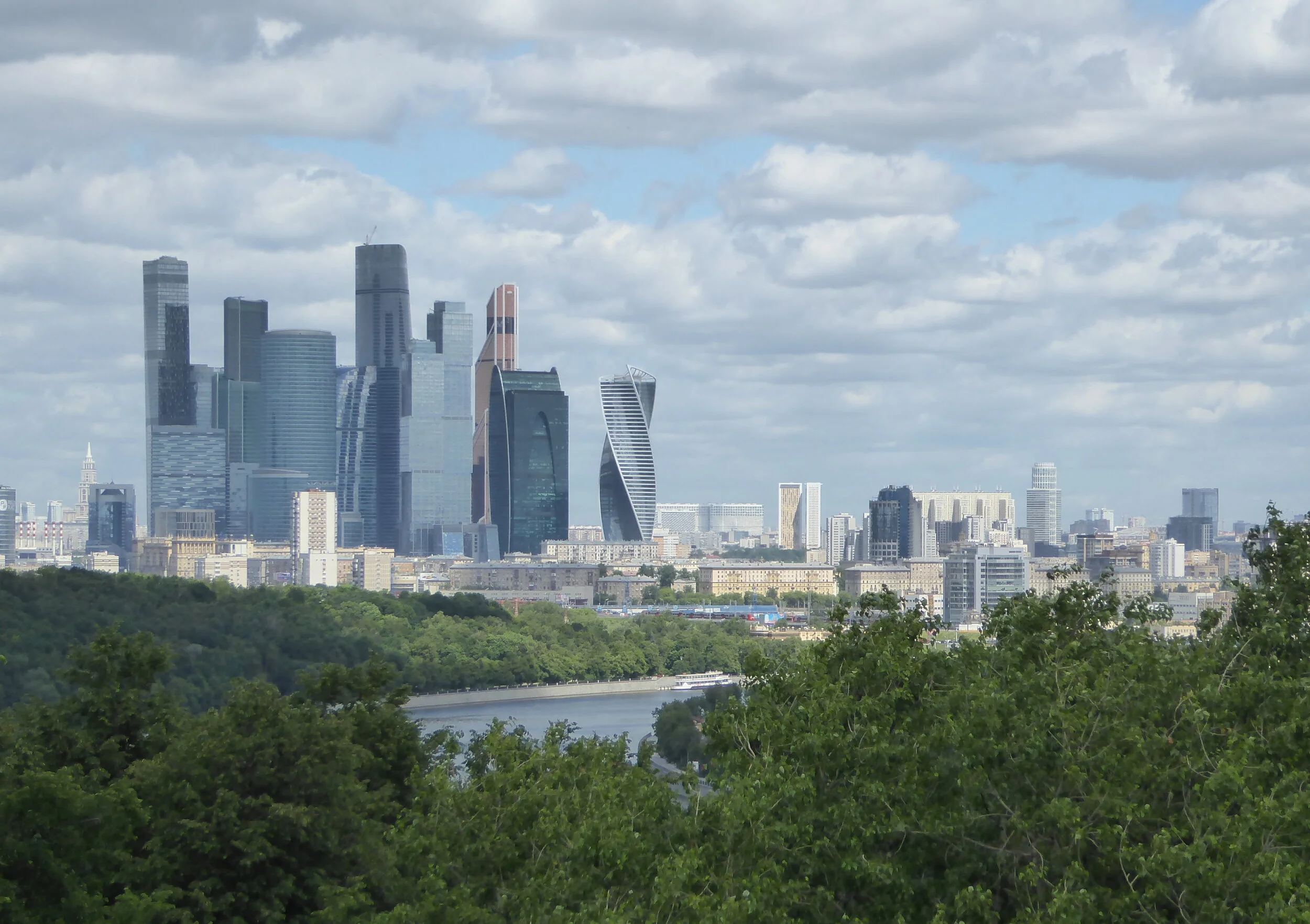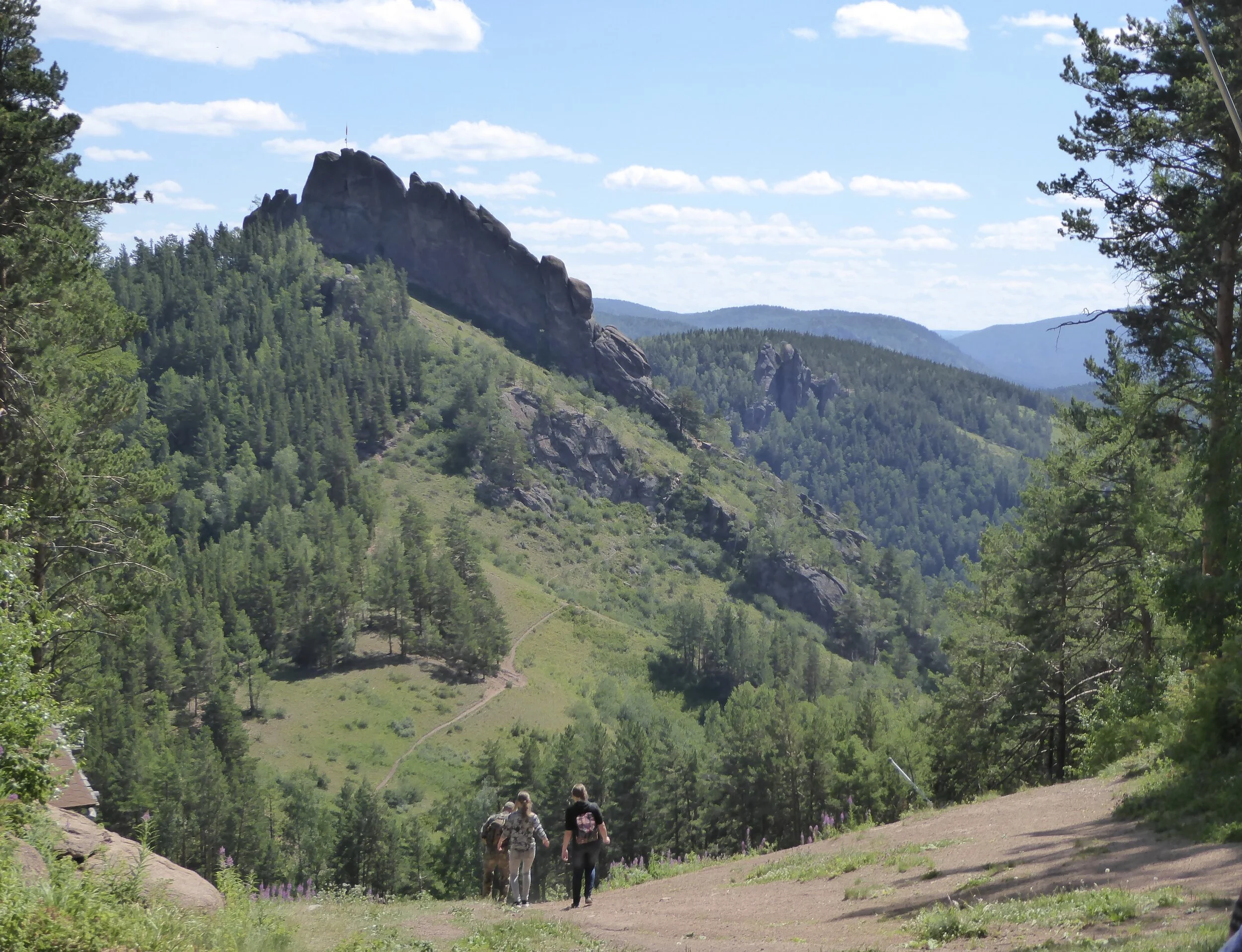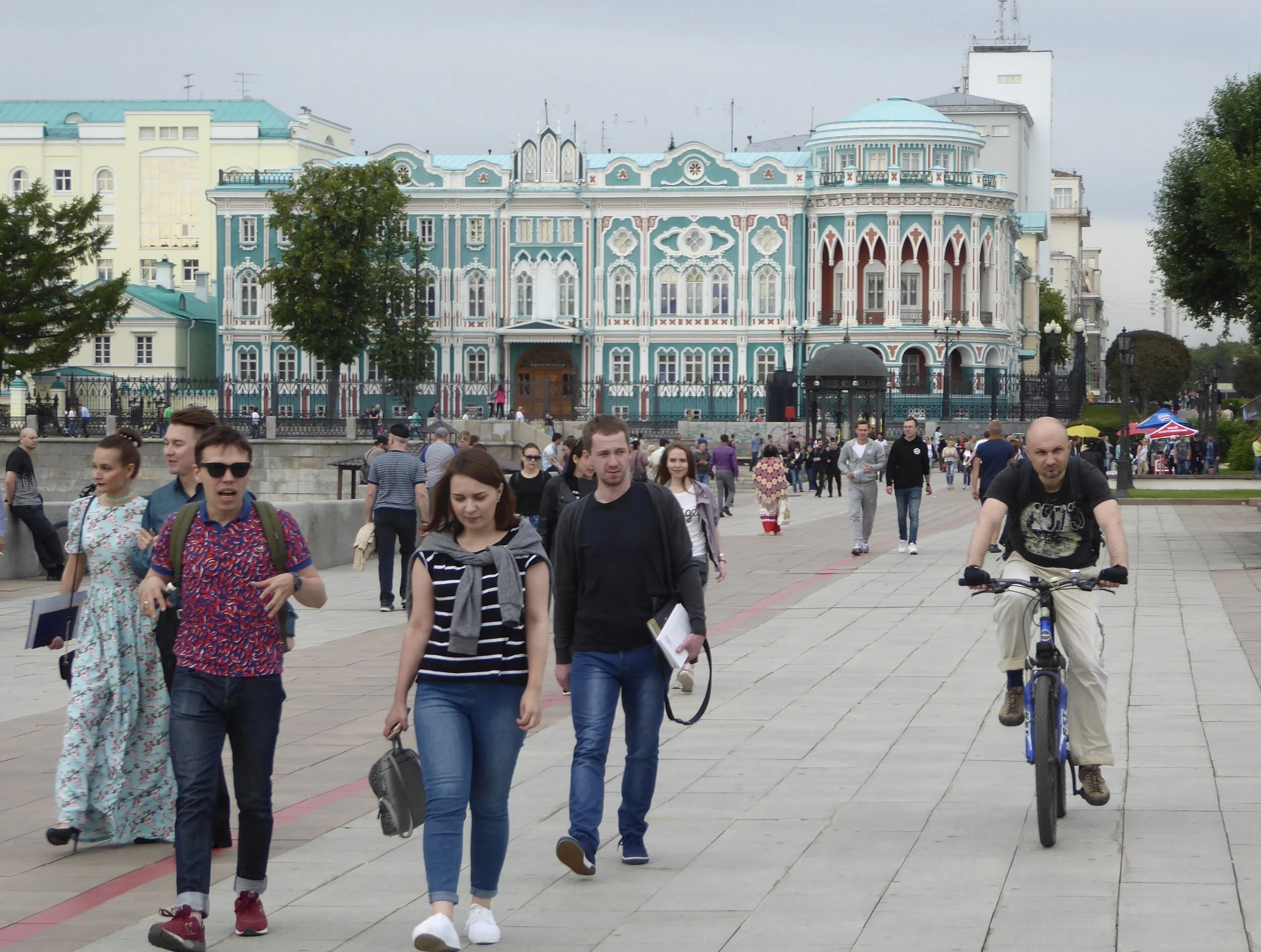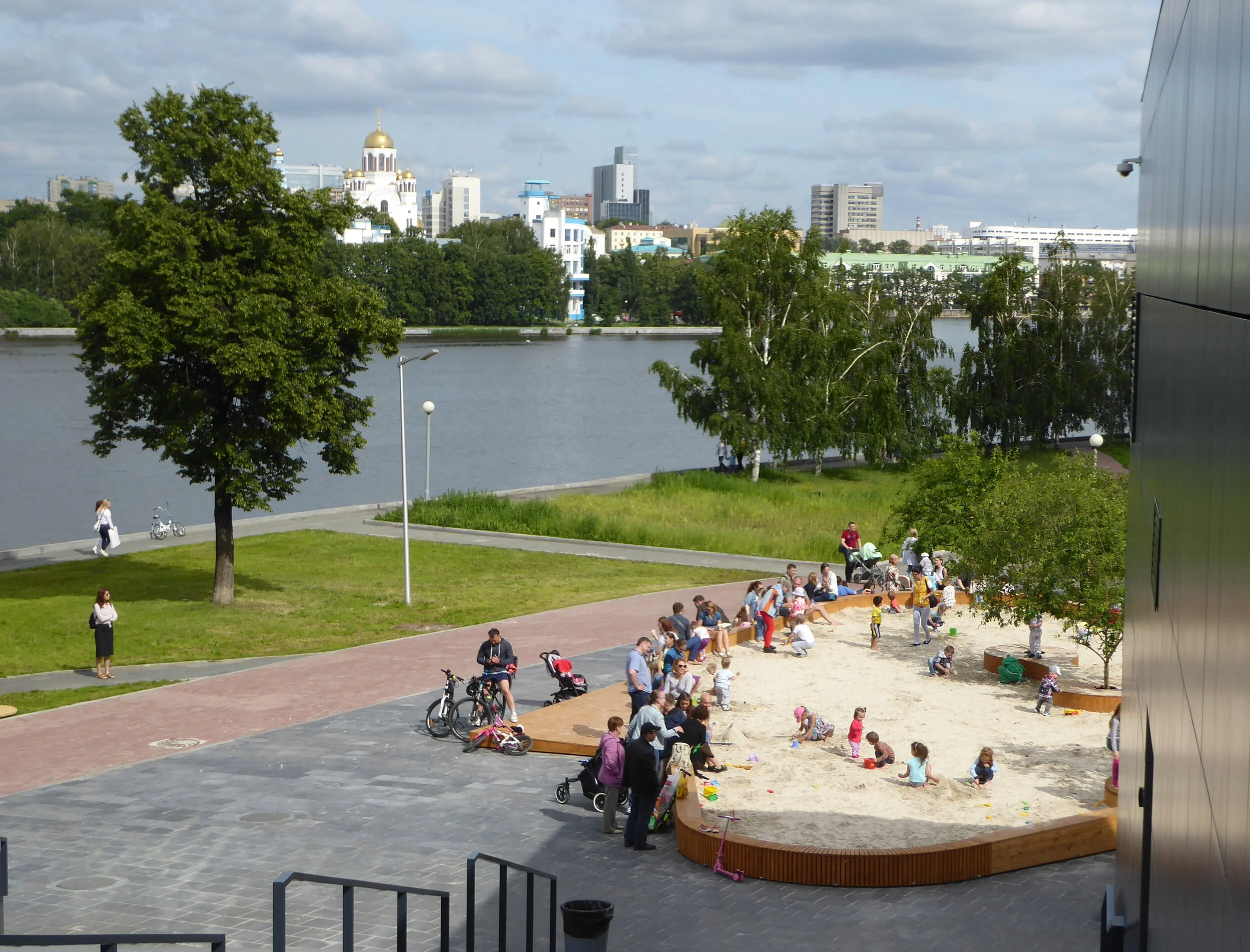Russia: Some planning observations
Planning News |September 2017
It’s 100 years since the Russian revolutions of 1917. Following the revolution in February 1917, the Tsar abdicated and a Provisional Government was established. In October[1] the Bolsheviks took control under Lenin and the Soviet Union was created. Nearly 70 years later the Union disintegrated and Russia was reinvented with Boris Yeltsin as the new President.
In 1917 the new State inherited overcrowded cities characterised by poor sanitation, disease and inequality. In city planning annals, Ebenezer Howard's garden cities (inspired in part by the Russian communist-anarchist Peter Kropotkin) receive a mention. Although the development and implementation of any plans was delayed until the end of the Civil War, the new regime set out to reinvent society in accordance with Marxist principles; communal ownership of resources, universal education, income and gender equality, an end to global imperialism and the unification of town and country. All land was nationalised and socialised, and in August 1918 all urban property was transferred by decree to the State or local authorities.
Under Stalin’s rule from 1929 to 1953, scores of “socialist cities” were founded near new, expansive steel mills. Built from the ground up, these factory complexes ‘were intended to prove, definitively, that when unhindered by pre-existing economic relationships, central planning could produce more rapid economic growth than capitalism’[2]. The most infamous of the new developments was Magnitogorsk, a planned steel milling city on the Ural River, since described as an urban planning catastrophe. [3] Nevertheless, the site has been proposed for UNESCO world heritage listing.
SOVIET HOUSING
One immediate action of the new regime was to takeover bourgeois housing, including the particularly fabulous palaces along the river front in St Petersburg, and turn it into housing for the proletariat. Many of the Communist leaders, including Sergei Kirov whose flat is now a museum, had their apartments in buildings such as the ‘Apartment Building of the First Russian Insurance Society’ completed in 1914. The building is gigantic, a typical feature of many Russian apartment buildings built then and since. The complex is connected by a system of more than ten courtyards and provided with all the modern amenities of the time: steam heating, lifts, electricity and telephone service. It had its own generating station, boiler room, laundry room, incinerator and a snow-melting system. At street level there is still a variety of shops.
Apartment Building of the First Russian Insurance Society’ - Kamennoostrovskiy Prospekt
Housing built in the following years was considerably less comfortable but had many of the communal features and often included internal courtyards. Flats were very small and two families often shared. Until the Khrushchev era in the 1960s, most housing was built onsite - in the so-called Stalin style. The 1960s saw the development of prefabricated concrete panel constructions known as "Krutsjovsky". (These were five storeys to avoid the need for a lift). In the 1980s, more spacious 9 – 19 storey ‘advanced apartments’ took over. Local authorities were responsible for renting the flats and rents were kept extremely low. Dealing with the housing authorities was difficult, as described by David Remnick,[4] who complained to the October District Regional Party Committee in Moscow about the hot water being shut off for a month every year. The head official responded: “I’m glad some of our foreign friends live in our district, but sir, if you write a lousy article, we’ll not only turn off your hot water, we’ll turn off your lights and turn your sewage pipes around”.
Almost all available resources went into building more flats rather than maintenance but by the early 1990s the construction of new housing ground to a halt. There is now a significant legacy of poor-quality housing throughout Russia.
Soviet planners promoted the ‘walking city’. Nurseries and preschools, communal eating areas, theatres and sports venues were planned within walking distance to workers’ homes. Wide boulevards accommodated marches and enabled a clear route between factories and home.
DACHAS
Soviet ideology had no room for what in Britain was called “a middle landscape” between the countryside and city so the phenomenon of the dacha is particularly interesting. Surveys in 1993–1994 suggested that about 25% of Russian families living in large cities had access to a seasonal or year-round home located on the edge of the city. Between St Petersburg and Moscow, south of Moscow and on the outskirts of cities further east, there are many colonies of dachas visible from the train; large and often elaborate wooden sheds usually in vegetable gardens and accessed by unmade roads. They originated as small country estates handed out by the Tsar and have been popular among the Russian upper and middle classes ever since. In Soviet times many were nationalised and given to the elite of the party and in the 1930s they were distributed through dacha cooperatives attached to organisations so that now there are settlements of writers, miners, artists, engineers etc. The sizes and types of buildings were closely regulated and they were not intended to be permanent residences.
After WW2 people began squatting on unused pieces of land near towns and cities and building dachas. These were gradually regulated and allowed and dacha building continued. Russian novels set in the 1950s often feature dacha life in the Summer where the Muscovites spend their time growing vegetables, speaking more freely than in the city and drinking vodka[5]. The 1980s saw the peak of the dacha boom with more and larger buildings.
Since the collapse of Communism most dachas have been privatised and many have become large, permanent residences. Many villages beside the Trans-Siberian railway line appear to have been transformed as, apparently, due to rapid urbanisation, many village houses are now being sold as dachas.
PUBLIC INFRASTRUCTURE
Russian cities generally have excellent public transport systems. The Moscow Metro is world famous, not only for its stations but also the extent and the frequency of the service. Like Tony Kevin[6] I spent most time on the Red Line, which links many of the main Moscow attractions, and can verify that the system’s reputation is justified. The elevated Moscow Central Circle line, built on a former goods line and opened in 2016 [7] provides a great overview of inner Moscow and its extensive green (in Summer) spaces. It encircles the city and provides access to the botanical gardens, the cosmonauts’ museum and the enormous VDNKh trade show and amusement park built between 1935 and 1939.
Moscow metro train – with wooden framing and embossed wallpaper
The St Petersburg public transport system; metro, buses and trolley buses, and the trolley bus and tram systems in Yekaterinburg and Irkutsk are also excellent. There is a new metro station being constructed in St Petersburg in front of the Mariinsky Theatre and near the Conservatorium. (Poor music students living in the area say that they won’t be able to afford to live there once the station is opened).
There is a lot of pressure for new roads. The road from Yekaterinburg to Moscow (1,790 kilometres away) is a mess and only now being upgraded – to two lanes! Between Irkutsk and Lake Baikal, urban sprawl caused by the new rich clearing the taiga (bush) and building suburban houses on large lots, means huge traffic jams, piles of rubble and new road construction. Eight months of snow, frozen soils and, in St Petersburg the swamp, add to the difficulties and cost of construction. (Building the St Petersburg metro, starting in 1955 required freezing the soil with liquid nitrogen to enable tunnelling).
New commercial centre of Moscow – from the Central Circle line
Planned settlements in Soviet times included a lot of open space. The nationalization of land in 1917 paved the way for the establishment of Parks of Culture and Rest on former estates of the aristocracy. Gorky Park in Moscow was established in 1928. In St Petersburg, the Green Belt of Glory, a circle of public parks and memorials along the historic front line was established in the late 1950s to commemorate the 850 day siege of Leningrad by the Germans.
Housing estates included large areas of greenery with playgrounds, boulevards and squares. Several National Parks were proclaimed in Soviet times. I visited Stolby National Park, a 47,219 hectare park near Krasnoyarsk in Central Siberia which was opened in 1926. We also visited the south western end of Lake Baikal. Lake Baikal was declared a UNESCO World Heritage site in 1996 but there have been a number challenges since, including a proposal to build a nuclear enrichment plant in 2004 and the ongoing saga of the Baykalsk Pulp and Paper Mill, constructed in 1966 on the edge of the lake, bleaching paper with chlorine and discharging waste into Baikal.[8] The plant has been opened and closed and finally went bankrupt in 2013.
Stolby National Park- Central Siberia
The demolition of historic buildings, especially churches, to make way for the new communist structures was a general trait of communist urbanism. The most notorious demolition was of the Cathedral of Christ the Saviour, erected in Moscow to commemorate the defeat of Napoleon in 1812. The site was intended for the Palace of the Soviets, which was never built, and instead there was a large and popular swimming pool there until 2004 when the Church was reinstated. In Yekaterinburg the house where the Tsar and his family were murdered in 1918 was demolished in 1977 but has since been replaced with the Church on the Blood, opened in 2003.
POST 1991
In 1991 when Boris Yeltsin took Russia out of the Soviet Union and it ceased to exist, the revolution of October 1917 was effectively reversed. Land, housing and industry is no longer state-owned. The arrival of capitalism has meant selling off state assets and closing down industry. Many renters were offered title to their units at no cost, although many older Russians have continued to rent. By the mid-1990s, more than half of Russia’s housing was privately owned with the remainder administered by municipal authorities.
Renovated Soviet housing – St Petersburg- The Myers equivalent is at street level
Housing sizes have increased from average apartment sizes of around 56m² in the early 90s to 120m² by 2008-2009 and average house sizes from 200m² to 250m² since 2005. The Gulf of Finland in St Petersburg is lined with new housing developments (gigantic, naturally), which are advertised in the Siberian Airlines magazine. In Moscow, every beautiful, decorative 1920s building around Arbat, where we were staying, has been or is being renovated. Both cities are renovating and redeveloping Soviet housing. One method of doing this is cladding and many government buildings – especially old railway station infrastructure – are receiving this treatment.
Cladding an apartment building in Krasnoyarsk, Siberia.
The City of Moscow is implementing a 3.5 trillion-rouble project to demolish and replace 1,700 dwellings. It was planned to complete this by 2015, with 1,300 demolished by 2012 but so far this year there have been several demonstrations by those who fear losing their properties. All municipalities must now plan land for houses and register this land with the local Land Committee. The Committee conducts a cadastral valuation of the land from which it will be possible to levy and collect a land tax.
Since the late 90s as the country recovers from financial crisis and recession there has been a gradual refurbishment of the older city centres and the introduction of more urban design. Work by Jan Gehl’s firm in Moscow has resulted in clearing cars from the footpaths, new bicycle and pedestrian paths along the river and throughout the city centre and a number of streets being closed to traffic[9]. The quality of the urban environments is also enhanced by the general lack of advertising – or even obvious shop signs – and underground power infrastructure.
A view to one of the Stalinist ‘Seven sisters’- an apartment building - from Lubyanka Prison
City centres have seen the redevelopment of former industrial sites: in the centre of Irkutsk, our hotel was a replica merchant’s house, part of the complete reconstruction of a wooden Siberian town of the 18th and 19th centuries. (And up the hill the original wooden houses are gradually fading away). Irkutsk municipality is displaying its plan for new neighbourhood centres, parks and pedestrian routes. In Yekaterinburg, in the late 90s, there was a spate of overnight demolitions, making way for new, monster shopping centres. (It is possible that there is a link between these and the elaborate Mafiosi headstones in the city cemetery). There are several new high rise buildings around the lake including the Yeltsin Centre with a sandpit and interactive fountain – both full of children – wide pathways and community spaces on the dam wall with promenading locals, book sales, a band performing in the underpass, pony rides and chess games. The Yeltsin Centre includes the excellent Yeltsin Museum and Bar Boris. To exit the museum you pass through a replica Kremlin office and past a Yeltsin hologram making his resignation speech: ‘I am tired’.
A Summer’s evening on the dam wall in Yekaterinburg.
The sandpit at the Yeltsin Centre (The lake becomes a skating rink in Winter).
CONCLUSIONS
Of course observing Russian planning brings more questions than answers. Surely planning in a Soviet system would be simpler and more successful than in a property owning democracy? Housing, transport and services could be fully integrated, growth directed to the most appropriate and efficient locations and no one would be homeless. Apparently when asked, before 1976, about the success or otherwise of the French Revolution, Chou En Lai said that it was ‘too early to tell’. [10]
[1] Until 1918 Russia used the Julian calendar thus the February revolution was in March and the October revolution in November.
[2] Appelbaum, Anne, (2012), Iron Curtain: The Crushing of Eastern Europe 1944- 1956,
[3] https://www.theguardian.com/cities/2016/apr/12/story-of-cities-20-the-secret-history-of-magnitogorsk-russias-steel-city.
[4] Remnick, David (1995), Lenin’s Tomb, Penguin, London.
[5] Ulitskaya, Ludmila, (2010), translated by Polly Gannon, The Big Green Tent, Picador, New York.
[6] Kevin, Tony, (2017) Return To Moscow, UWAP, Crawley, WA.
[7] https://en.wikipedia.org/wiki/Moscow_Central_Circle
[8] https://en.wikipedia.org/wiki/Lake_Baikal
[9] Matan, Annie & Newman, Peter (2016) People Cities; The life and Legacy of Jan Gehl, Island Press.
[10] Remnick, David (1995), op cit

